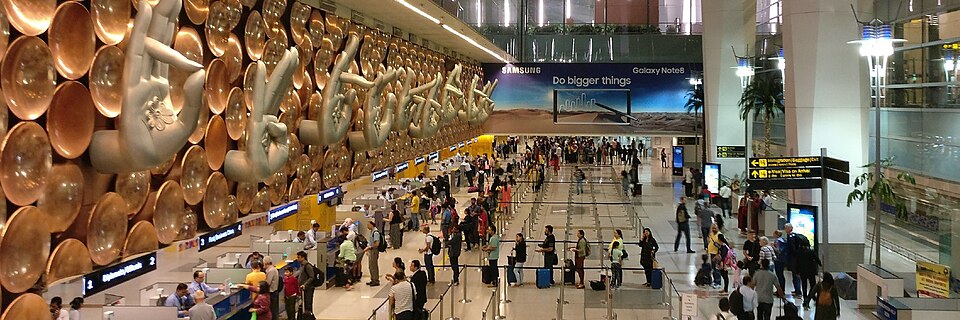Pahalgam terror attack is set to make India and Pakistan square off in a lot of areas, not least in their respective stance of banning each country’s airspace for the other. India has already suspended the 14 categories of visas to Pakistan citizens in the wake of the attack that rocked Kashmir and stultified tourism in the area. India has also suspended the Indus Water Treaty and by doing so, it can choke as much as 80% of irrigated fields in Pakistan from water supplies.
A report even claimed that Air India would have losses as much as $600 million each year if Pakistan bans its airspace to Indian carriers. Major airlines around the world, such as Lufthansa, Air France, among others, have already said that they would not be using Pakistan’s airspace in the midst of tension between the two nations. But what are the implications for the aviation of the two respective nations?
Given that India launched Operation Sindoor which led to the loss of lives in Pakistan (Pakistan claims 26 lives were lost, and two mosques were hit), what we already know is that the aviation standoff is going to last longer than initially expected.
Consequences for Pakistan following the airspace ban

Photo: Zscout370 | Wikimedia Commons
NDTV reported that Delhi had suspected Pakistan’s deep state of being involved in the attack that took place in Pahalgam on April 22, 2025. After India posed diplomatic restrictions on Pakistan following the terror attack, Pakistan barred airlines from India operating over its airspace. [ On a historical note: Following the highjack of Indian Airlines IC 814, the highjackers seek permission to land in Pakistan. Pakistan had denied permission]
According to a report published in the CNBC TV 18, there are two reasons why airlines are avoiding Pakistan’s airspace:
” First, in the event of a sudden military escalation between India and Pakistan, planes in mid-air risk being caught without sufficient fuel to divert to alternative airports. Second, an emergency landing in Pakistan could place Indian passport holders on board in a vulnerable position and escalate diplomatic tensions.”
According to Reuters, some of the carriers that have resorted to avoiding Pakistan’s airspace include:
- Airlines under the umbrella of Lufthansa Group are “avoiding Pakistani airspace until further notice”.
- A similar statement was given by Air France, and cited “recent evolution of tensions” between the two nations for avoiding Pakistan’s airspace.
Flight plans of airlines avoiding Pakistan might resort to using the airspace over India, China, Thailand, among other nations, though this will mean that the flight times will be longer.
When Pakistan closed its airspace following the Pulwama attack, some reports claimed that Pakistan charged approximately $580 for a Boeing 737 flying its airspace (as overflight fees). For bigger fixed-wing, such as the Airbus A380, which is the largest passenger aircraft ever, the fees are greater. Some of the numbers that encapsulate the losses for Pakistan following the closure of airspace after Pulwama attack include:
- $232,000 every day only from overflight charges
- $300,000 when landing and parking, and other charges were added
- $460,000 for Pakistan International Airlines [following longer flight times on domestic routes coupled with suspended international routes]
- $100 million in aggregate [ during the closure time]
[You can learn about how an airport makes money in our guide below]
Carriers from Pakistan have an aggregate of 53 aircraft, more than half of these operated by the Pakistan flag carrier Pakistan International Airlines (PIA) alone. According to data from planespotters.net, PIA has a total of 32 aircraft in its fleet – 17 of these are the Airbus A320, 12 are Boeing 777, and three of them are ATR 42/72s. India Today reported that Pakistan began avoiding Indian airspace even before India had officially banned Pakistani carriers from its airspace following the Pahalga attack. Airlines from Pakistan are currently circuiting around China to avoid Indian airspace, and this is adding two to three hours of flight time.
Indian carriers have a much larger fleet (Indigo, India’s premier budget carrier, has more than 400 aircraft in its fleet) and experts believe that the ramifications (financially) for Indian airlines being barred from the Pakistani airspace are much greater.
Timeline and Investigation: How Indigo Became India’s Largest Airline?
Financial consequences for Indian airlines after Pakistan barred its airspace

Photo: RachitSinghal | Wikimedia Commons
To draw a parallel, when Pakistan closed its airspace to Indian carriers in 2019, it led to losses of approximately ₹540 crore ($63 million) in five months. All Indian-owned or Indian-operated airlines are subjected to the ban, reported Airways Magazine:
“The closure of Pakistani airspace to Indian aircraft comes as part of retaliatory measures following the Pahalgam terror attack in Indian-administered Kashmir. Pakistan’s decision was announced after Prime Minister Shehbaz Sharif convened a meeting of the National Security Committee with top military officials, including Army Chief Asim Munir. This action is one among several diplomatic countermeasures Pakistan has implemented in response to India’s accusations of Pakistan supporting “cross-border terrorism.”
Following the airspace closure, Indigo announced that it would cancel flights to Almaty from April 27 till May 7. On April 27, Air India (which operates a fleet of 193 aircraft) estimated that the ban would cost $591 million per year, and therefore “asked the Indian government for a “subsidy model” proportionate to the economic hit”, reported Reuters.
An increase in flight time to US and Europe by 2 to 2.5 hours will mean that there will be greater fuel burnt (reports claim that as much as 30% of an airline’s operating expenses is fuel-related), rescheduling pilot and cabin crew work hours. The airport that is likely to be affected the most is Delhi Airport, which is among the busiest in the world.
International flights departing from Delhi will have to skirt southwest to Gujarat, then around the borders of Pakistan over the Arabian Sea before heading to the Middle East. This means an additional flight time of around an hour.
Will the ban mean that passengers will have to pay a higher airfare?

Photo: 2006nishan178713 | Wikimedia Commons
John Grant, the chief analyst at OAG was quoted in CNBC 18 to have said that despite the fears that passengers will have to pay a higher airfare, one has reasons to believe that this is not the case:
“It’s symbolic more than anything majorly disruptive for India’s airlines… These types of things on their own are unlikely to lead to an increase in airfares.”
This is in stark contrast to the admission by an airline executive who was quoted in the Business Standard to have said that the increase in operating costs for the airlines will result in the rise of airfares.
